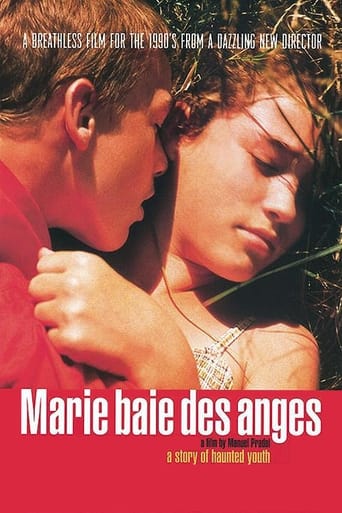

It's no definitive masterpiece but it's damn close.
... View MoreGripping story with well-crafted characters
... View MoreIt's one of the most original films you'll likely see all year, which, depending on your threshold for certifiably crazy storylines, could be a rewarding experience or one that frustrates you.
... View MoreWorth seeing just to witness how winsome it is.
... View MoreThis is one of those typical pretentious, overrated French (wannabe)"arthouse" movies that make you regret wasting your time on it. It confirms all the negative stereotypes about arthousefilms. It's just so bad, it's uncomfortable to watch.All the main characters in this film are very unsympathetic. Maybe all French people are (I hope not!), but the lead girl just behaved like a spoiled bitch and her loverboy had no heart or backbone whatsoever. And he was ugly to boot! French "heroines" always seem to be incredible bitches, except for Joan of Arc perhaps, but in this movie you see another of those typical French "difficult" women (in this case a euphemism for bitch). There's no good reason to like her. So if you're into watching films with reasonably recognizable or likeable main characters avoid this pretentious drivel at all cost.What I also hate about this movie is that it shows a dreamworld, but one completely without imagination. They just left things out, like parents and responsibility for your actions and inactions.If you want to watch a nice french movie you're better off with the Taxi films, at least they don't have as much pretense as this piece of trash.The problem is, in France movies and other "artforms" are subsidized by the government to favor them over foreign material (pure protectionism but somehow they get away with it despite being part of the European Union). So they keep making this crap, even though I suspect not even the French watch it!!!2 out of 10 because I have seen even worse
... View MoreThis movie promises much but delivers only beautiful scenery of the southern France. We were expecting something along the line of "The Blue Lagoon" spiced with French subtlety, but received a chaotic cocktail of random scenes from the life of a group of disturbed kids. The director was desperately trying to make an artistic movie, but had nothing to say. Everything here is forced, dialogs are stale, the characters' motivations are nonsensical. The only thing the movie has going for it is the beautiful scenery and good camera work.
... View MoreI must confess that I read several reviews of the film before actually seeing it, and despite a mixed greeting I tried to keep my mind open to it. It is a beautiful film.The shots, unlike many of our formula movies, are not centered directly on what can be called a plot. But the quick snaps of seemingly unrelated material when taken as a whole becomes the entire atmosphere of the film and if those quick shots are so beautifully crafted as this then you have created a beautiful piece.I digress, the film itself may be too deep for us Americans. most Americans when they sit down to watch a foreign film expect depth but in our V8 world we sometimes feel entitled to a clearly defined plot and story. "Whats all this about boats and a party!? What's this got to do with anything??" I can hear my contemporaries cry to which I can only answer emote don't analyze.I won't compare the film to any others all films are works of art and deserve to be treated as such if you truly wish to recognize them. Marie Baie des Anges, with its haunting interconnectedness or perhaps disconnectedness weaves with beautiful images to create a truly beautiful film.
... View MoreThis waste of time really changed one long held viewpoint of mine: the French don't make sanitary, vaccuous, overly polished, HOLLYWOOD type movies. The entire film is so utterly bland despite the subject matter that it becomes very irritating to endure. Why make a movie about runaways if it isn't cinema verite? The locations are stunning, the production value is, of course, excellent, and the very young female lead is mesmerizingly beautiful.(although utilized very inappropriately here by the direction) Beyond this,the film offers nothing but empty promises and a very predictable storyline. Please save yourselves of this irritation and watch "Kids","Streetwise" or "Salaam Bombay" for a palatable version of the subject matter this film hints at.
... View More